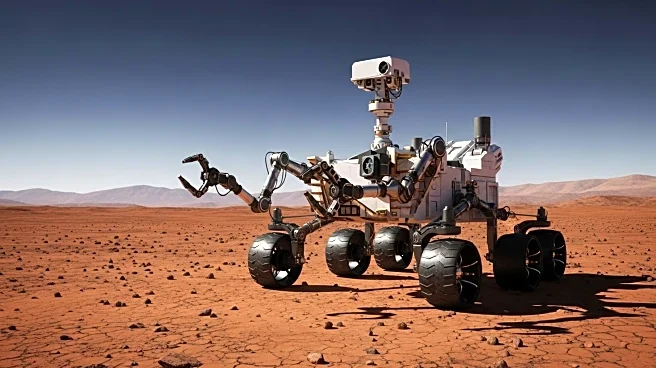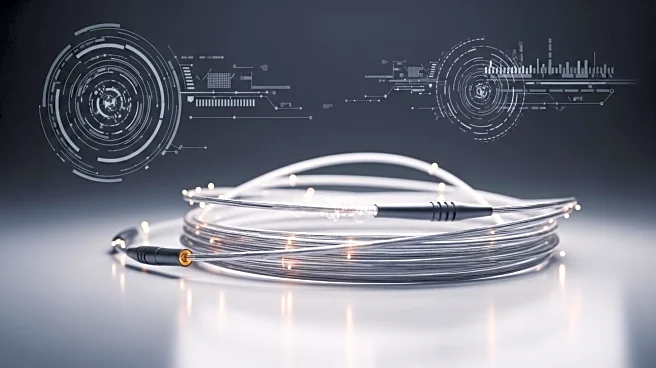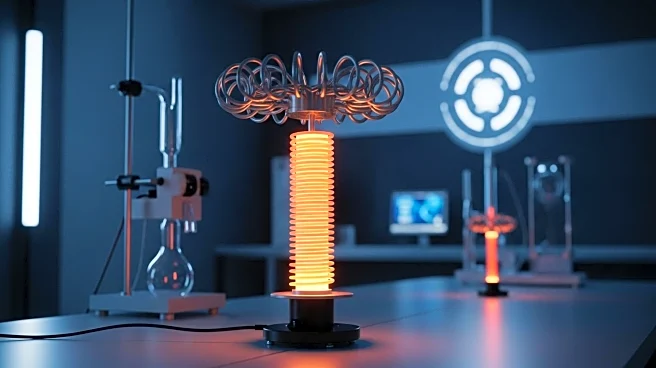What's Happening?
NASA has developed a cutting-edge fiber optic sensing system known as FOSS, which stands for Fiber Optic Sensing System. This technology integrates advanced sensors and innovative algorithms to monitor a variety of critical parameters in real-time. FOSS is capable of measuring position, deformation, stiffness, operational loads, strength, stress, and magnetic fields, making it highly suitable for structural health monitoring applications. The system uses Fiber Bragg grating sensors embedded in optical fibers, which are then attached to structures. These sensors respond to changes in optical wavelength due to stress or pressure, allowing the system to calculate and display parameters such as shape, position, temperature, and pressure. FOSS is particularly beneficial for long-term monitoring of structures that may experience stress from environmental factors like wind or earthquakes.
Why It's Important?
The introduction of FOSS technology represents a significant advancement in the field of structural health monitoring. By providing real-time data on a wide range of parameters, FOSS can help prevent structural failures by identifying potential issues before they become critical. This technology is particularly valuable in industries such as oil and gas, where it can be used to monitor drill heads for direction, temperature, and pressure, ensuring operational safety and efficiency. Additionally, FOSS's ability to discern between liquid and gas states in containers can improve inventory management and safety in various industrial applications. The potential for widespread adoption of FOSS could lead to enhanced safety standards and reduced maintenance costs across multiple sectors.
What's Next?
NASA is actively seeking licensees to commercialize the FOSS technology, indicating a move towards broader industry adoption. Companies interested in utilizing this technology can contact NASA's Licensing Concierge to initiate discussions. As FOSS becomes more widely available, it is expected to be integrated into various industrial applications, potentially transforming how structural health is monitored and managed. The technology's adaptability and precision make it a promising tool for industries looking to enhance safety and operational efficiency.
Beyond the Headlines
The development of FOSS technology also highlights the growing importance of real-time data in industrial applications. As industries increasingly rely on data-driven decision-making, technologies like FOSS that provide accurate and timely information will become essential. Furthermore, the use of fiber optic sensors in structural health monitoring could lead to new standards and regulations, promoting safer and more efficient industrial practices. The ethical implications of such monitoring technologies, including privacy and data security, will also need to be considered as they become more prevalent.











